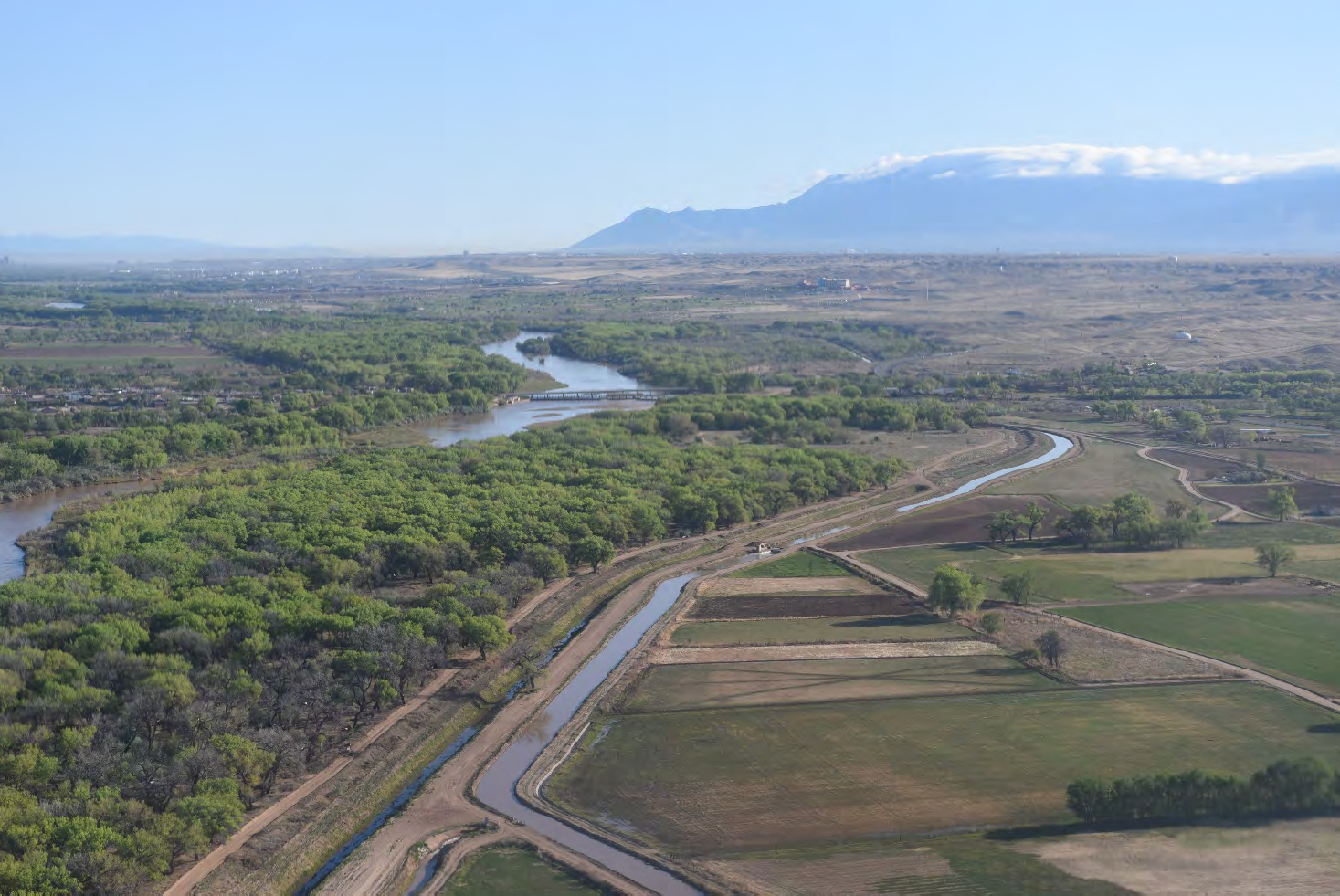
Middle Rio Grande Lower San Acacia Reach Improvements Project Environmental Impact Statement
Project Overview
Photo credit: Bureau of Reclamation
Project Overview
The Bureau of Reclamation (Reclamation) is preparing an environmental impact statement (EIS) on the Lower San Acacia Reach of the Middle Rio Grande. Reclamation is considering realigning a portion of the Rio Grande from approximately river mile (RM) 74 to RM 54.5 (project, proposed action); this area is part of the Lower San Acacia Reach. Reclamation is the project proponent. The US Army Corps of Engineers, Bureau of Indian Affairs, US Fish and Wildlife Service, Bureau of Land Management, Middle Rio Grande Conservancy District, and New Mexico Interstate Stream Commission will be invited to participate as cooperating agencies for the EIS. Other entities will be considered, as necessary, during the EIS process.
The project’s goals are to increase water delivered to Elephant Butte Reservoir (EBR), maintain and enhance ecosystem health (such as protecting and promoting recovery of endangered species, minimizing river drying, and increasing available habitat), and increase the benefits of system maintenance actions by working with geomorphic trends of the river. Reclamation is authorized to conduct work within the channel and floodplain of the Rio Grande under the Federal Flood Control Acts of 1948 and 1950 (Public Laws 858 and 516, respectively). Reclamation is also authorized to engage in planning for major rehabilitation and replacement of existing assets under the Reclamation Project Act of 1902 (32 Stat. 388) and supplementary acts; the Water Resources Development Act of 2007, Section 2031 (Pub. L. 110-114); the Omnibus Public Land Management Act of 2009 (Pub. L. 111-11), Title IX, Subtitle G; the Water Resources Planning Act of 1965, as amended (42 U.S.C. 1962a-2); and Department of the Interior Manual Part 707 DM 1.
Purpose and Need
Reclamation and other agencies face the challenge of managing water flow, sediment deposition, and protecting environmental resources within the highly dynamic Middle Rio Grande watershed. The purpose of this proposed river realignment is to improve water delivery to Elephant Butte Reservoir, to maintain and enhance ecosystem health (i.e., protecting and promoting recovery of endangered species, minimizing river drying, and increasing available habitat), and increasing the benefit of system maintenance actions by working with the geomorphic trends of the river.
Key Issues
Channel Perching
Channel perching occurs when high sediment loads are deposited in a system with a fixed channel location and a laterally confined floodplain; it is viewed as the root cause of many of the issues within the lower San Acacia Reach. Perching maintains the riverbed at an elevation above the water table, allowing for seepage loss and river drying. Perching increases sediment concentration in the main channel, allowing sediment plugs to form, leading to levee breeches and significant losses as water spills into low-elevation areas disconnected from the main channel.
Conveyance Losses
Several factors contribute to conveyance losses. Transpiration, water vapor released from plants’ leaves, and evaporation, water vapor lost from open water and moist soil can significantly reduce flows. Seepage, the infiltration of surface water into the ground, also contributes to water loss. The rate of water loss due to seepage depends on the gradient to the water table and soil properties. Stranded water, which remains ponded and does not return to the river after a high-flow event, occurs when the floodplain is disconnected from the main channel. Disconnection can be the result of perching or incision.
Decline in Ecosystem Health
Historically a wide and shallow river, the Rio Grande presents a narrow and uniform channel. Likely in response to changes in habitat conditions, the Rio Grande Silvery Minnow was listed as an endangered species in 1994, and the Southwestern Willow Flycatcher in 1995. Both species and their habitat require frequent floodplain inundation to thrive. Less frequent floodplain inundation stresses native vegetation and allows invasive phreatophytes to dominate riparian areas, reducing the native habitat available.
Project Area Overview Map
For further information
For more information on the Lower San Acacia Reach Improvement Projects (LSARI) Environmental Impact Statement, please contact Ashlee Rudolph, Project Manager (bor-sha-aao-lsari@usbr.gov).
To be added to or removed from the mailing list, please contact Val Stanson (val.stanson@empsi.com).
Persons who use a telecommunications device for the deaf may call the Federal Relay Service (FedRelay) at 1-800-877-8339 TTY/ASCII to contact the above individual during normal business hours or to leave a message or question after hours. You will receive a reply during normal business hours.
For more information on the Lower San Acacia Reach Improvements Project (LSARI) Environmental Impact Statement, please contact Ashlee Rudolph, Project Manager (bor-sha-aao-lsari@usbr.gov).
To be to added or removed from the mailing list, please contact Val Stanson (val.stanson@empsi.com).



